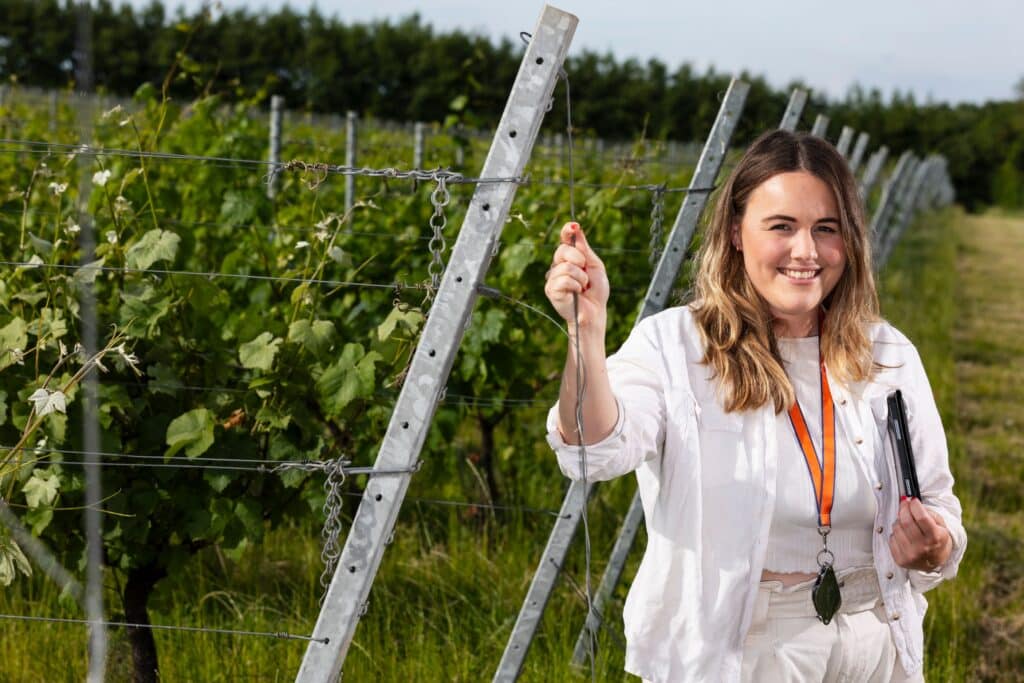Know the rules when spraying – Vineyard
Anyone using plant protection products (PPPs within vineyards must adhere to certain rules governing their storage, application and disposal ...
Anyone using plant protection products (PPPs within vineyards must adhere to certain rules governing their storage, application and disposal. So, with a new season approaching, Hutchinsons agronomist Megan Fitzpatrick highlights some key points to know.
One common question among growers new to the vineyard sector and less familiar with crop agronomy, is around the certification needed to apply pesticides (herbicides, fungicides and insecticides) in the vineyard.
Having the correct certificate of competence in place is essential, both for operator and environmental safety, getting the most from products, and for legal compliance under the Control of Pesticides Regulation 1986. The initial qualification anyone using PPPs commercially must have is a PA1, which covers the safe handling, application, and storage of pesticides. Additional qualifications will then be needed depending on the type of application equipment used. Knapsack spraying, for example, requires a PA6, while the PA3 covers air-assisted spraying, and a PA2 for boom sprayers.
Employers must also complete a COSHH risk assessment to evaluate the risks associated with using hazardous substances.
Larger vineyards supplying supermarkets may consider joining the National Register of Sprayer Operators (NROSO) in addition to the mandatory training. Although not a legal requirement, some retailers want suppliers to be part of NROSO to help demonstrate their environmental responsibility. It is also a requirement for some farm assurance schemes, such as Red Tractor.
Hutchinsons is running NRoSO training events in Wisbech, Ledbury and Canterbury during late January into February. Book online at www.hutchinsons.co.uk or contact your local depot.
Storing safely
All PPPs must be stored safely, and not doing so could result in prosecution by the HSE, and the Environment Agency if chemicals contaminate watercourses.
Whether it is a purpose-built store, or a converted farm building, all stores must:
- Be in areas free from flooding and away from watercourses Be bunded
- Be secured and locked
- Be signed appropriately (including no smoking or naked flame signs)
- Have organised shelving (powders above liquids)
- Have appropriate lighting
A first aid kit, and a stock record should also be accessible, as emergency services will require this information in the event of an accident. A spill kit should be available too, containing a broom, PPE, sand or granular absorbents, bucket, shovel, chemical-resistant bags, emergency contact numbers, and an emergency action plan.
Application
Accurate application is crucial for many reasons, and starts with ensuring equipment is working correctly. All spraying equipment must be tested by an approved NSTS test centre before it is five years old, and after that, air-assisted sprayers must be tested every three years and small boom sprayers every six. Knapsack sprayers do not need testing, but should be regularly inspected by a competent person.
All equipment should be calibrated regularly (e.g. at the start of each season, if nozzles/pumps are replaced, when changing target application rates), to ensure the correct dose is delivered.
Although enclosed cabs on tractors are not compulsory, employers have a duty under COSHH to minimise the risk to employees, so a tractor cab – with appropriate air filters – hugely reduces health risks and is therefore highly recommended.
Always read the label and Safety Data Sheet (MSDS) that comes with every product. The label contains key information about the safe and proper use of the product, including conditions such as maximum total dose, harvest intervals, and environmental protection requirements. The MSDS covers health and safety, including precautions for safe handling and storage, and appropriate personal protective equipment.
Some general ‘golden rules’ are to avoid spraying in the rain, or when heavy rain is forecast as this increases the pollution risk from surface runoff – as can spraying when the ground is waterlogged. Also avoid windy conditions which cause drift.
Disposal
All empty containers must be triple rinsed, stored safely, and disposed of by a licensed company. Waste disposal companies must have a Waste Carrier License issued by the Environment Agency – growers can verify this via the EA public register https://environment.data.gov.uk/public-register/view/search-all
Ensure a Waste Transfer Note is completed as this provides some protection in the event that waste is mismanaged and subsequently traced back to the farm.
It is also important to avoid having surplus mixture left in the tank after application, so make sure you only mix enough to complete the job and calibrate sprayers properly to deliver the correct amount.
